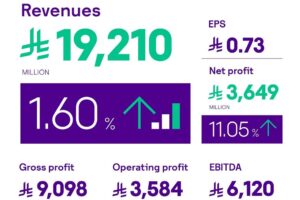Curvalux has secured a multi-million dollar order following ground-breaking commercial trials in the Philippines to test technology that will bring affordable, sustainable Internet connectivity to remote, low-income communities around the world.
The company’s partnership with Globe Telecom – one of the Philippines’ biggest mobile operators – is designed to overcome the challenges of implementing large-scale telecoms infrastructure across the archipelagic state, comprising of more than 7,000 islands. Now, following the successful completion of commercial trials across the country, Globe has made a significant order for additional Edge Node systems to expand its network deployment using Curvalux’s pioneering multibeam technology.
Curvalux Edge Nodes can be installed on existing telecoms towers and provides coverage by using 16 separate narrow beams per sector to concentrate radio frequency energy into a tightly focused beam like a laser pointer. The beam isolation means that there is a far lower risk of interference from other sources, leading to vastly improved connectivity at distance in remote areas.
Unlike other solutions, the infrastructure does not need to be connected to the electrical grid and can be powered solely through renewable energy sources including solar panels. This makes the solution not only cheaper to operate but far more sustainable than current 4G and 5G technologies.
Digital connectivity is becoming increasing critical for the economic viability of remote communities around the world. In the Philippines, more than 40 million people still have no access to the Internet, a figure representing 36 percent of the total population.
Gerard Ortines, Globe Telecom’s Head of Network Solution & Capex Management, said: “The delivery of reliable and cost-effective broadband services in the Philippines is hampered by an incredibly diverse geography and demographic. Traditional terrestrial Wi-Fi antennas may work well in some areas but are power-hungry, expensive to deploy and have a small coverage area. Curvalux’s Edge Node can be deployed at scale across difficult terrains while providing high performance connectivity at a cost that is affordable to the low-income families who need it the most.”
Curvalux’s solution holds many benefits over more traditional connectivity solutions. Less than 1,000 watts of electrical power is required to send high-powered signals over long distances, in comparison with LTE/5G systems which require 10,000-15,000 watts.
Initially designed for a 5GHz frequency, the Curvalux standalone antenna system is interoperable with any standard Wi-Fi 5 or Wi-Fi 6 Access Points and off-the-shelf CPEs, enabling the use of inexpensive CPEs and unlicensed bands. The initial investment in the technology delivers substantial savings as it requires fewer installations and less equipment. Low energy usage and reduced maintenance requirements also make total cost of ownership over the lifetime of the system significantly less than with conventional wideband antenna, while bringing effective, low-cost broadband to hundreds more users.
Richard Pak, Curvalux’s CEO, added: “Curvalux is able to transform the lives of families and businesses across the Philippines by improving their Internet connectivity and enabling them to become part of the world’s digitally based economy. There are so many other countries around the world facing similar issues, with millions of people living in remote areas without adequate telecoms infrastructure. These are often areas where those on lower incomes reside – the very people who cannot afford broadband connectivity via more traditional telecoms solutions.”
Curvalux is also working on similar ‘proof of concept’ projects around the world, including remote locations in Indonesia, Malaysia and Mongolia. Other trials are set to be launched over the forthcoming months in the UK, US, Canada, Nepal, South Africa, Brazil, India, Nigeria, Saudi Arabia, New Zealand, Papua New Guinea, Peru and Russia.












